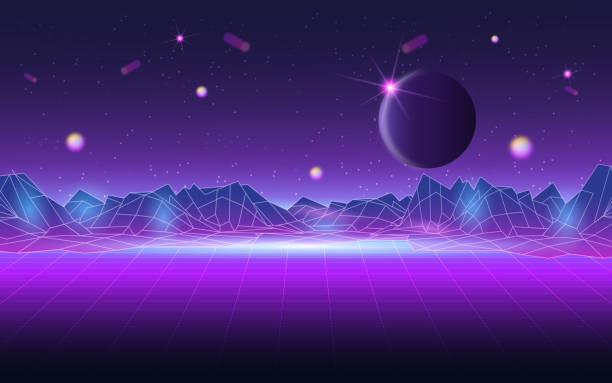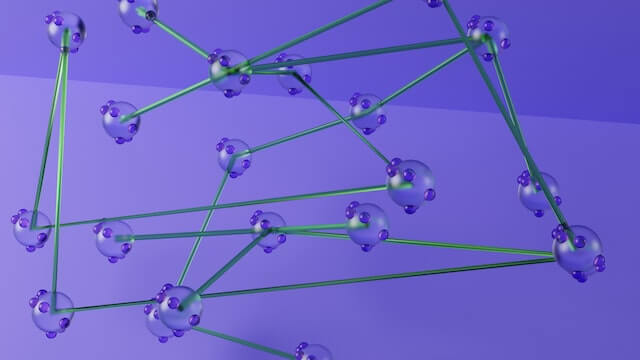Some links on this post may link to affiliate pages that offer compensation to the author of this post.
The internet has gone through a massive transformation in the past few years. We are now living in an age where the web is more interactive and user-friendly than ever before. This new era of the web is known as Web 3.0, which stands for the third generation of internet technology.In this article we will discuss Web 2 VS Web 3. We will also explore some use cases of these technologies and how they can be used to create powerful applications for businesses and individuals alike.
What is Web 2 VS What is Web 3?
 Web 2.0 was the first major evolution of the internet, introducing features such as social media, blogs, wikis and other interactive services that allowed users to interact with each other online. Web 3.0 takes this concept further by introducing technologies such as blockchain, metaverse, VR, artificial intelligence, and machine learning that enable users to interact with each other in a more secure and efficient way.
Web 2.0 was the first major evolution of the internet, introducing features such as social media, blogs, wikis and other interactive services that allowed users to interact with each other online. Web 3.0 takes this concept further by introducing technologies such as blockchain, metaverse, VR, artificial intelligence, and machine learning that enable users to interact with each other in a more secure and efficient way.
What are Web 2 Websites with Examples
Web 2 websites are websites that you primarily interact with by reading or clicking. Whether you are on a desktop, tablet, or mobile phone, web 2 websites are limited by 3 interactions – Scrolling, Reading, and Clicking. Over the evolution of Web 2 websites, we introduced video, images, animations, and more.
Some popular examples of Web 2 Websites are Wikipedia.com, Facebook.com, Twitter.com, Apple.com, and OKcupid.com.
Although each of these websites have incorporated more layers of interaction, the primary experience on these websites happens on a flat website by clicking, scrolling, and reading.
What is Web 3?
Web 3 is the word used to describe internet connected experiences that have evolved past the 3 primary browsing interactions we have had for decades. These three primary internet browsing interactions (clicking, scrolling, and viewing), have taken the internet through years of economic and social revolutions, but we are quickly realizing the limitations of these 3 interactions.
There are many Web 3 interactions that are as vast as the amount of Web 2 Websites. Web 3 interactions can include moving your head in VR, using artificial reality to shop for furniture, interactive and personalized websites, and more.
Examples of Web 3 Websites and Applications
Some popular examples of Web 3 you may have already used are:
- Using Amazon’s 3D A.R. feature to show a product in the space you plan on using it in.
- Shopping on a Shopify Website and viewing a 3D model of a physical product you are considering buying
- Playing PokemonGO with your friends on your phone or tablet
- Meeting up with Friends in a virtual bar on VR chat
Each of these internet connected interactions are examples of the technology that Web 3 enables you to use, connect, shop and socialize.
What is the Biggest Difference between Web 2 and Web 3?
The biggest difference between Web 2 and Web 3 is interaction. Web 2 websites allowed us to interact and navigate a global network of websites on a computer or mobile phone but Web 3 Websites allow us to engage and physically interact with artificial and simulated digital goods.
Its important you know that Web 2 Websites and Web 3 Websites are not exclusive. That means a web 2 website you interact with today could be a web 3 website tomorrow by incorporating existing 3D technology available to business owners today.
If you are interested in learning more about how to incorporate more interactive web 3 elements on your own website for your business, subscribe to get notified of the latest Web 3 marketing strategies and tools.
Exploring the Key Features of Web 2
 Web 2.0 is the evolution of the World Wide Web and it has transformed the way we access, consume, and share information. It has enabled users to interact with each other in real time, create content that is accessible to everyone, and build applications that are more engaging and user-friendly.
Web 2.0 is the evolution of the World Wide Web and it has transformed the way we access, consume, and share information. It has enabled users to interact with each other in real time, create content that is accessible to everyone, and build applications that are more engaging and user-friendly.
Key Features of Web2:
- Form submissions
- Purchases over the internet
- Scrollable interfaces on mobile.
The features that defined Web 2 allowed us to send and receive text, video, and images over the internet. Web 2 Websites would be most commonly used by businesses to run online marketing, by individuals to share and receive information, and groups to collaborate and schedule events.
Exploring the Key Features of Web 3
Web 3 is the next evolution of the internet, and it promises to be a revolutionary shift in how we access and store data. Web 3 is usually recognized as web technology that implements blockchain technology or offers 3D forms of interaction.
Key Features of Web3:
- Semantic Web
- Better AI
- Better Data for decision making
Is Web 3 Just Blockchain or Cryptocurrencies?
No. Although Web 3 has been commonly referred to when talking about cryptocurrency or Blockchain technology, Web 3 does not need to use cryptocurrency or blockchain technology. Many blockchain or crypto technologies also incorporate core elements of Web 2.
Does Web 3 Need Web 2?
Yes. Many have made the mistake of claiming that Web 3 technology and blockchain will eliminate the need for Web 2 technology, but this is not the case. Web 2.0 technology is and will always incorporate Web 1.0 elements and Web 3.0 technology will always need to incorporate elements of Web 2.0.
Web 3.0 technology is the continued technological advancement of Web 2.0 technology. Web 3.0 technology does not replace Web 2.0 technology, but instead builds on top of it to make it better, faster, and lighter.
Comparing the Benefits & Drawbacks Between Web 2 vs Web 3

Concept of Future digital technology metaverse, colorful background. Vector illustration eps10
The Internet has come a long way since the early days of Web 2.0, and now we are seeing the emergence of Web 3.0 technologies. But what exactly are the benefits and drawbacks you need to be aware of as we transition to more Web 3 focused technology?
What are the Drawbacks of Web 3?
A core feature of Web 3 is more data on everything you say, everywhere you go, and everything you do. As your digital data footprint increases, so does the potential problems that arise from increased data.
- Decreased Individual Privacy
- Technology Addiction / Mental Health Problems
- Increased Reliance on Digital Technology
Increased data on you means that the way you live your life will be tracked and monitored on a deeper and less privacy focused way. To make matters worse, most countries don’t have adequate data protections for private citizens to take control of their data. So increasingly so, the more often you sign up for an account anywhere, the more free data you are giving away.
Increased data will always be sold to you in ways that are focused on getting you to purchase something, which has led to more people experiencing technology addiction. Additionally, the incorporation of Web 3 may worsen the problem Gen Z has seen with problems like Anxiety, and Depression.
Web 3.0 Benefits
Although Web 3 is not perfect, it comes with a lot of great benefits for both consumers and business owners. Some of the best benefits of Web 3 are:
- Better small businesses
- Bigger Global Economy
- More Jobs for more people
- a Bigger Creator Economy
As more businesses incorporate elements of Web 3, they will be able to make better business decisions using data that users provide them. Common Web 3 features like Geotargeting and Semantic coding make it easier for businesses and consumers to find each other in an increasingly global economy.
Web 3 also is creating a bigger global economy that favors creative individuals. While AI is helping many write and create informational content quickly, web 3 is bringing content artists to the front of the internet that were never even possible in Web 2. Some examples of creator economies we have seen from Web 3.0 technology are: NFT’s, VR chatting, Virtual meditation Communities, and more.
Comparing Web 2 VS Web 3 in Digital Marketing
Web 3 will be fundamental in changing the way that innovative digital marketers reach and connect with their customers. Many businesses struggle being “just a domain on the internet” and Web 3 technology can help them overcome that problem with better interaction methods.
Benefits of Web3 for marketing:
- Enhanced data-driven decisions
- Better Customer / Business Interaction
- Faster Marketing Responses
Marketing companies and entrepreneurs use data for almost every part of their marketing campaigns. Marketers know that by reading and reviewing more data, you can become more efficient and effective at finding clients that want to buy your services.
Why Web3 is Better for Consumers
Businesses aren’t the only ones that can benefit from the features of Web 3. Consumers have a lot to gain as businesses invest in Web 3.0 technology. Individuals can expect to get:
- Quicker Product and Service Discovery
- Better Relationships with Global brands and Businesses
- Enhanced Social Interaction
As businesses invest in Web 3.0 you will be able to interact and make friends across the world, discover products at better prices, and build better, more personal relationships with the businesses you purchase from.
Conclusion: Which Technology Should You Choose for Your Business?
Choosing the right technology for your business is a critical decision. It can have a major impact on your bottom line and the success of your business. With so many options available, it can be difficult to know which technology is best for you. For most businesses, its important to build the fundamentals of your Web2 technology before investing in Web 3. Many businesses still don’t do the marketing fundamentals of Web 2.0 well enough so its important to make sure your business is running your Web 2 digital business well before making jumps to Web 3.
Web 3 does come with additional costs of development as most Web 3 features build on Web 2 features. But if you are solid in your Web 2 foundations, its worth looking into web 3 features to improve the interactions with your business.
Thanks for reading to the end of this post. If you find the information I provide to be helpful, please consider subscribing.
Disclaimer: None of the information presented on this site constitutes legal, business, tax, or medical advice. In each scenario, it’s recommended to first chat with a medical, legal, business, or tax professional before making any decisions.


